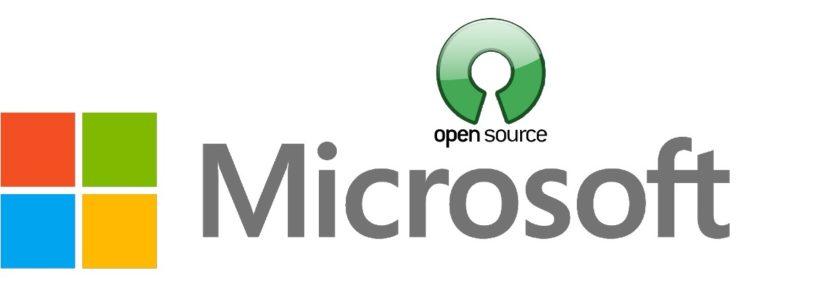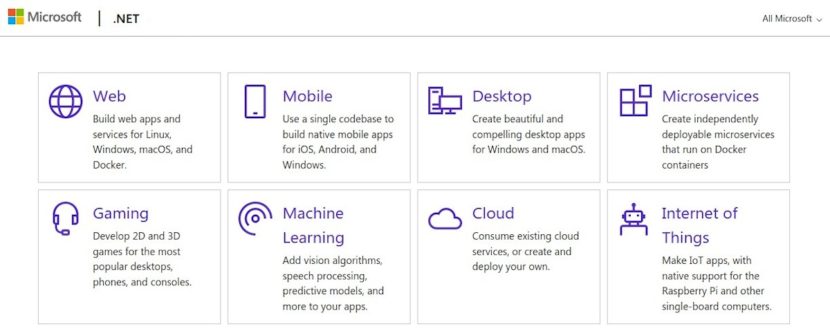
.NET and ML.NET: Microsoft Open Source Platforms
As we already reviewed in the publication called "Operating Systems at War: Microsoft on guard against everyone!", currently «Microsoft», The company of Redmond, USA, owner of «Windows» is in an open race to assimilate the best of other Operating Systems and export its products to them.
And in that way, apart from the already known programs exported to «GNU/Linux», we can mention the current ones: «SQL Server, .Net, Visual Studio Code y Skype». Being one of the last incorporated, the one known as «Microsoft Teams», as we mentioned in one more recent publication. And now, it brings us to «ML.NET», Machine Learning Framework de «Código Abierto» and multiplatform that complements «.NET».

Possibly all this growing ecosystem of applications of «Código Abierto» join in a short time, the «Navegador Edge» and «Antivirus Defender». And who knows, suddenly now with the income of «Microsoft Teams» it would not be surprising to see the «Suite Ofimática MS Office» or something very similar or close to this for «GNU/Linux».

Microsoft Open Source Platforms
As we already said, among the many software (programs, systems and platforms) de «Código Abierto» that lately «Microsoft» has contributed to the «Comunidad de Software Libre y Código Abierto», stand out:.NET and ML.NO.
What is .NET and what are its characteristics?
- It is a multiplatform development platform (Windows, Mac OS and Linux), open source and free, to build all kinds of applications: desktop, mobile, web, games, and for the Internet of things.
- It allows the use of various languages, editors and libraries for the different types of possible applications. Among the languages are:
- C #: Which is a simple, modern, object-oriented and safe programming language.
- F#: Which is a functional, cross-platform and open source programming language for .NET. Which also includes object-oriented and imperative programming.
- VisualBasic: Which is an accessible language with a simple syntax for building type-safe and object-oriented applications.
- It is an excellent cross-development platform, since it allows applications created in the aforementioned languages to run natively on any compatible Operating System, thanks to different integrated implementations, among which are:
- .NET Core: What is a cross-platform implementation for websites, servers and console applications.
- .NET Framework: Which is compatible with websites, services, desktop applications and much more on Windows.
- Xamarin / Mono: What is a .NET implementation to run applications on the main mobile Operating Systems.
- It contains a basic set of APIs that are common to all .NET implementations. In addition, each implementation can also expose additional APIs that are specific to the Operating Systems on which they will run. For example, the .NET Framework is a Windows-only .NET implementation that includes APIs for accessing the Windows Registry.
- It has a huge Library (ecosystem of packages) that extends its functionality. To make use of them, you can use NuGet, which is a package manager built specifically for
«.NET»containing more than 90.000 packages.
Note: for more information on «.NET» access your official website here.
What is ML.NET and what are its features?
- It is a free, open source, cross-platform Machine Learning platform that se runs on Windows, Linux and macOS with .NET Core or on Windows using the .NET Framework.
- It offers the possibility of adding machine learning in applications (online or offline) created with .NET, so that they can make automatic predictions with the necessary data.
- Has as base a model machine learning that specifies the steps required to transform the input data into a prediction. This platform allows you to train a custom model by specifying an algorithm, or use one created, available and already trained from the TensorFlow and ONNX platforms.
- The 64-bit version is compatible with all platforms. The 32-bit version is compatible with Windows, except for functionality related to TensorFlow, LightGBM, and ONNX.
Quoting «Microsoft», some possible examples of the type of predictions that can be made with «ML.NET» are:
| Prediction Type | Description and scope |
|---|---|
| Classification and categorization | Automatically classify customer feedback as positive and negative. |
| Continuous regression and prediction values | Predict home prices based on size and location. |
| Anomaly detection | Detect fraudulent banking transactions. |
| Recommendations | Suggest products that online shoppers can purchase, based on their previous purchases. |
| Time series and sequential data | Forecast weather and product sales |
| Image classification | Classify medical imaging pathologies |
Note: for more information on «ML.NET» access your official website here.

Conclusion
We hope you are "small but useful post" about these 2 interesting «Plataformas de desarrollo y Machine Learning de código abierto» de Microsoft called «.NET y ML.NET», which among many benefits or characteristics, stand out its compactness (compactness), flexibility and integration capacity, are of great interest and utility, for the entire «Comunidad de Software Libre y Código Abierto» and of great contribution to the diffusion of the wonderful, gigantic and growing ecosystem of applications of and for «GNU/Linux».
And for more information, always do not hesitate to visit any Online library as OpenLibra y jedit to read books (PDFs) on this topic or others knowledge areas. For now, if you liked this «publicación», don't stop sharing it with others, in your Favorite websites, channels, groups, or communities of social networks, preferably free and open as Mastodon, or secure and private like Telegram.
Or simply visit our home page at DesdeLinux or join the official Channel Telegram from DesdeLinux to read and vote for this or other interesting publications on «Software Libre», «Código Abierto», «GNU/Linux» and other topics related to «Informática y la Computación», and the «Actualidad tecnológica».